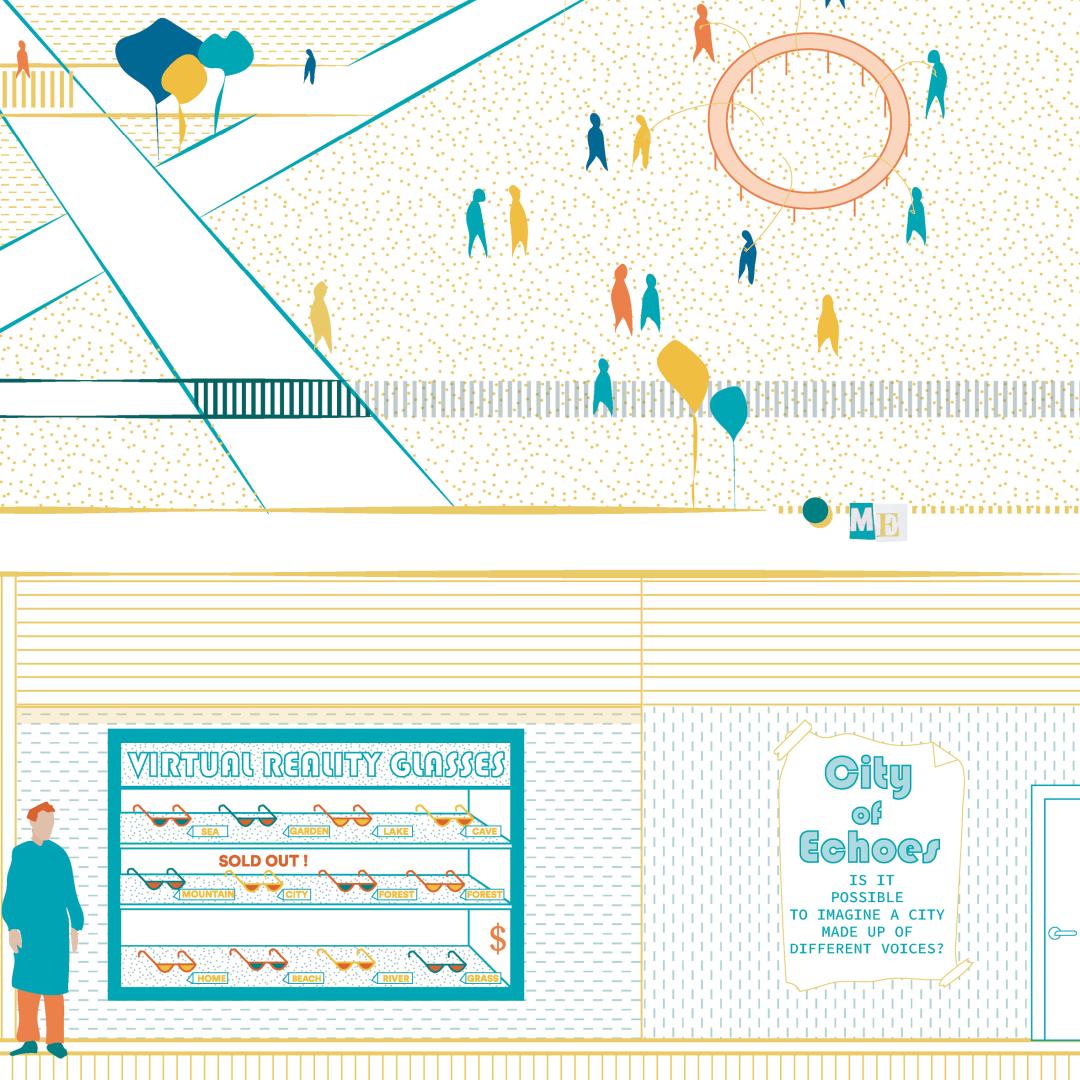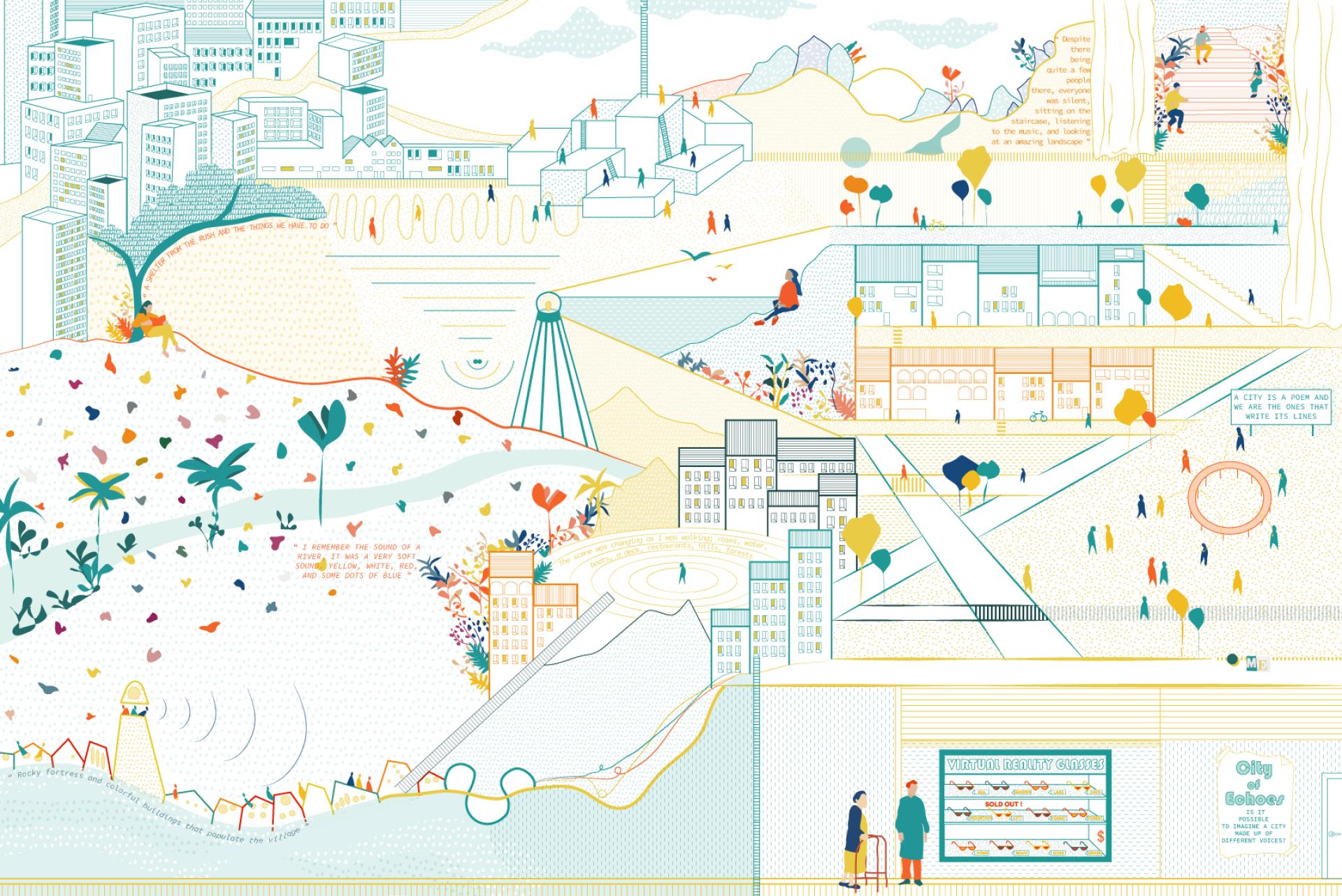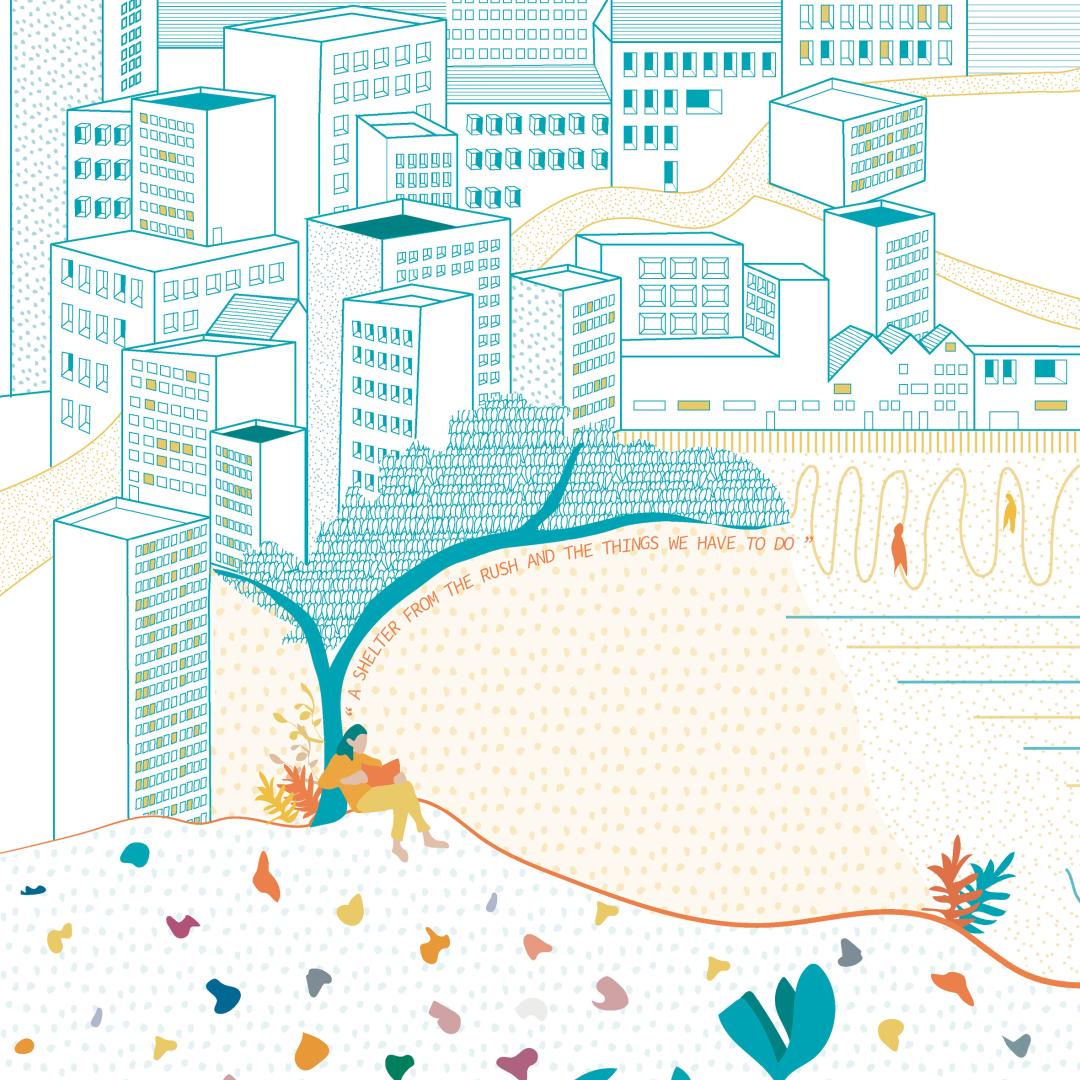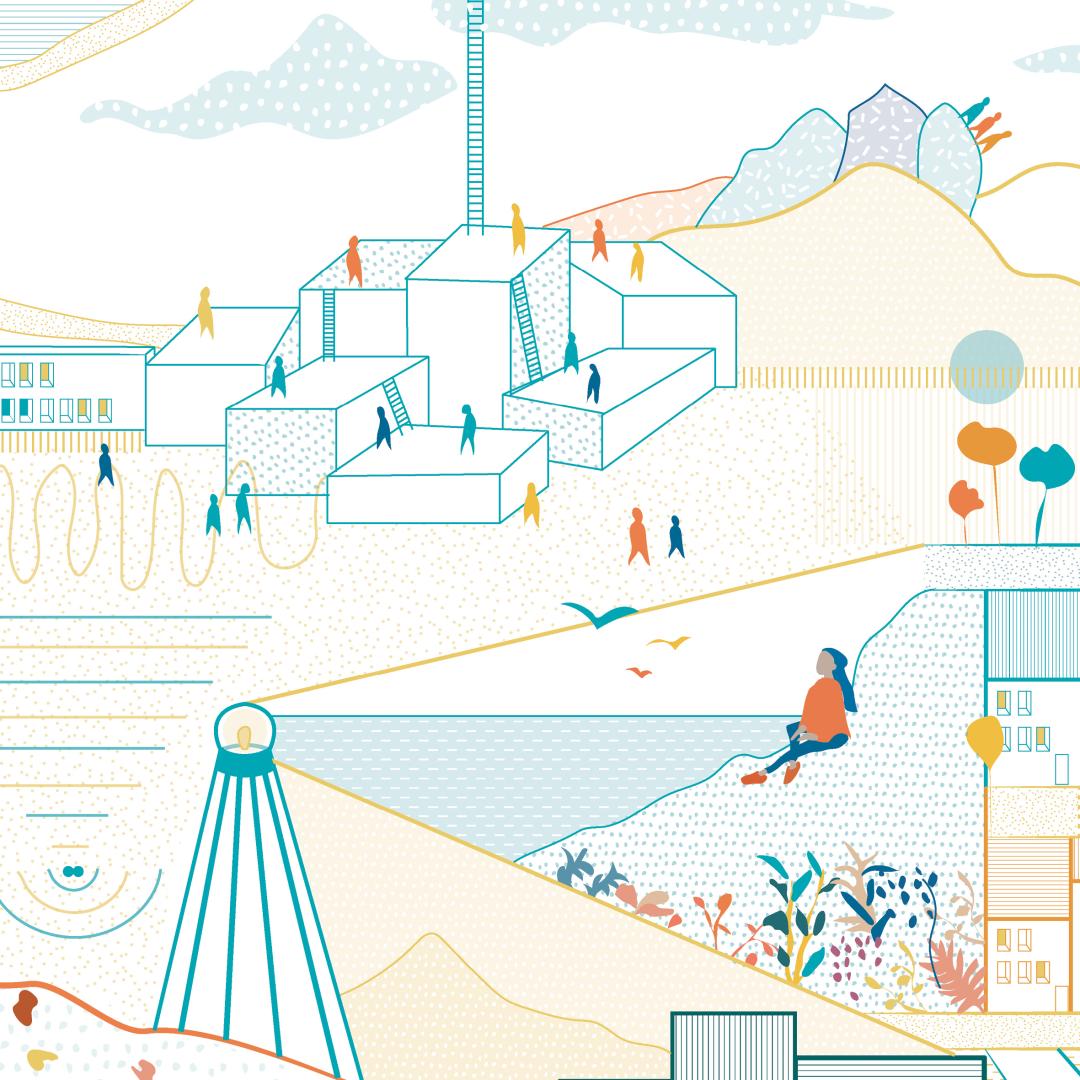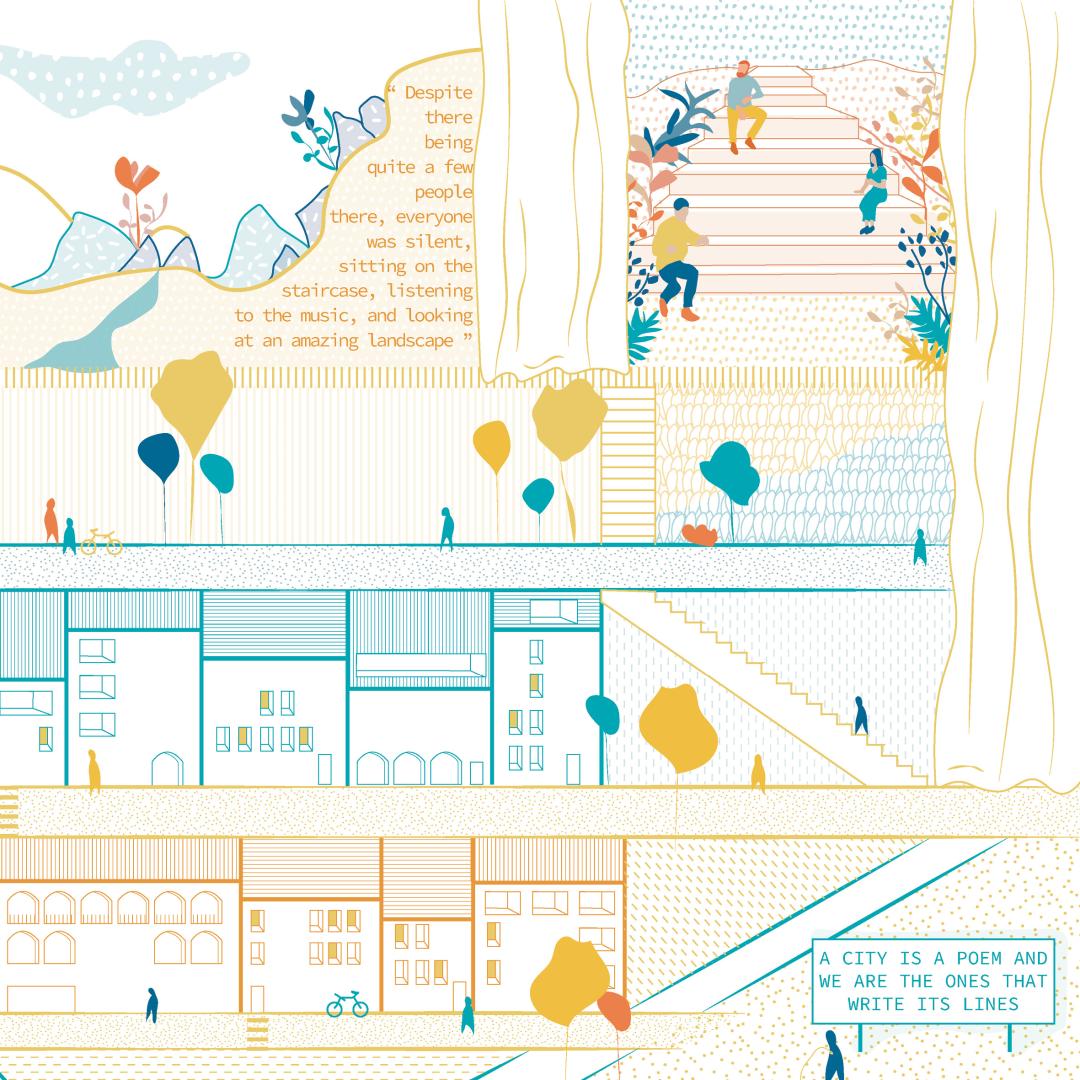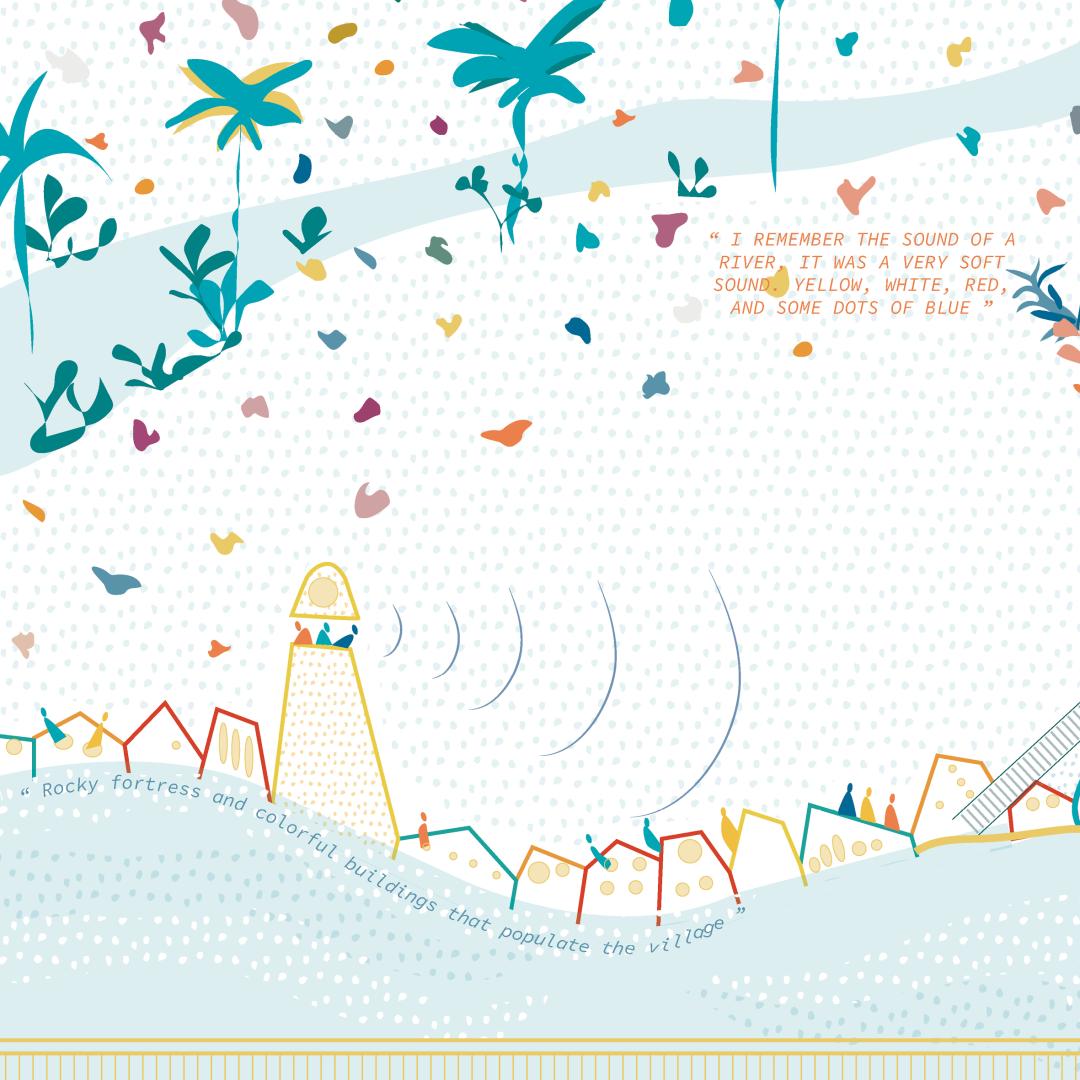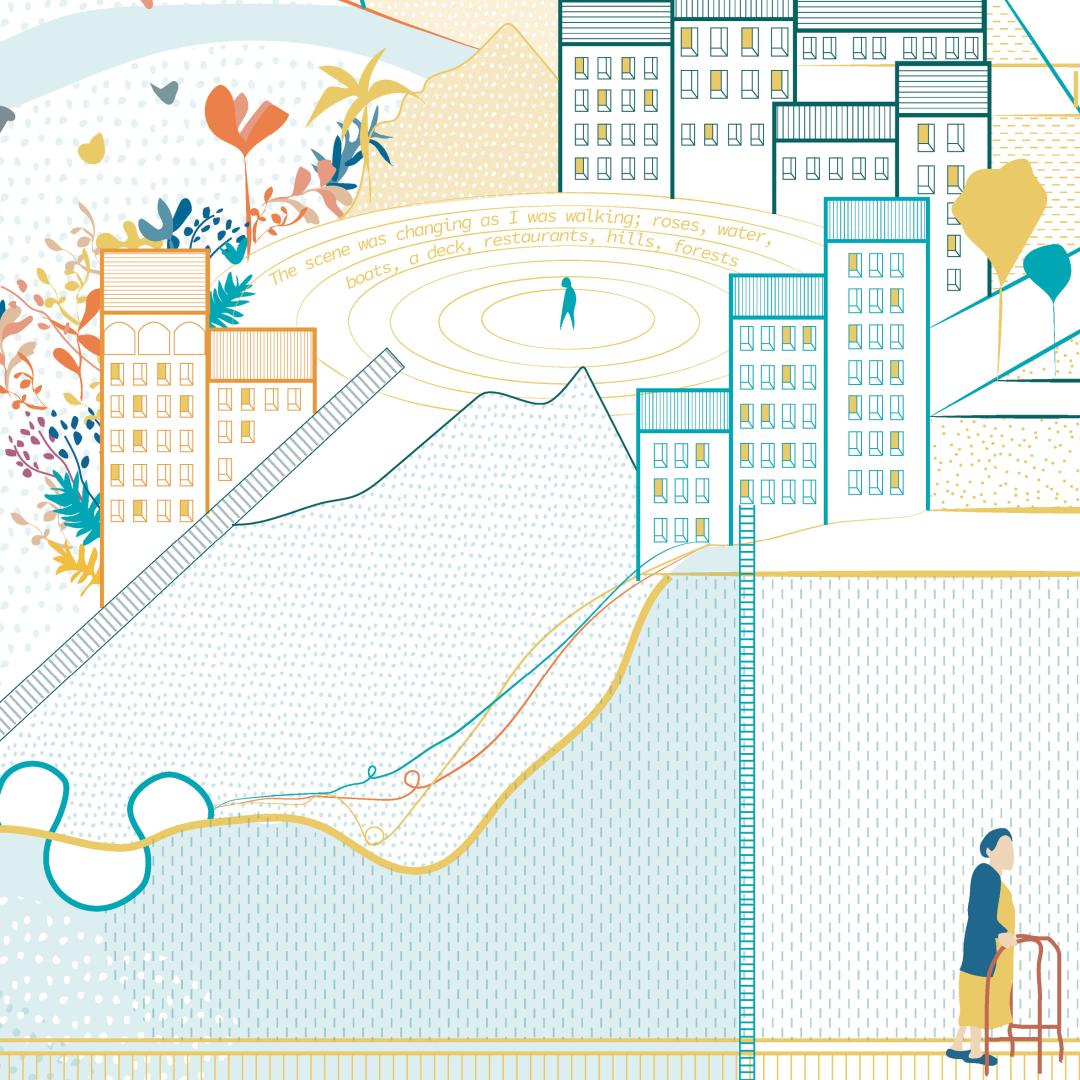City of Echoes
Basic information
Project Title
Full project title
Category
Project Description
City of Echoes is a living lab where every story counts. University training, provides us with the essential tools and skills and entitles us to make decisions that shape our built environment. The issue however, arises when one relies solely on this education and stops listening and asking questions. At city of Echoes, we are experimenting a complementary educational strategy which is based on learning directly from the citizens. We ask questions, listen to stories and imagine our tomorrow.
Project Region
EU Programme or fund
Description of the project
Summary
City of Echoes is a living lab for architecture and urban design. Here we adopt a horizontal approach and imagine inclusive, beautiful and sustainable cities together with people. In order to do that, we started with the definitions of these three values and asked ourselves two questions:
- What do these values mean to us first as architects, but then also as citizens, as the youth, as men and women and as foreigner and local.
- How can we promote and enforce these values through the tools at our disposal and our profession?
The outcome of our discussions around these two questions, led us to the idea of going one step prior to where we usually start our practice as architects and urban designers. That is to where we are not in charge yet, nevertheless people's stories are taking place. We are interested in hearing about those stories and train our senses in order to be able to extract the hidden layers that evoke the sense of beauty, inclusiveness and sustainability in people’s minds.
As the first exercise we asked people to describe us a beautiful place they have been to without mentioning its name and location. We did not know at the time, if we would receive inspiring voice messages or if this would lead us anywhere. We also did not know what we will exactly do with them. And that is why we call it a living lab. We experiment and find out. We played the voice messages during our virtual meetings as the team and while listening to them, each of us started imagining the place they were talking about. Once done, we started discussing it and showed each other our visualizations. That is when “City of Echoes” was born.
Our approach is not production-oriented. It is a living organism that is growing naturally. The aim is to extract the elements that contribute to beautiful, inclusive and sustainable built environments through a wholistic bottom-up approach where engaging the citizens and asking questions are fundamental ingredients.
Key objectives for sustainability
Sustainability is one of the most important topics of our time. However, addressing it properly and efficiently is long overdue.
It covers a broad range of factors in the fields of architecture and urban design such as the type of materials used, construction methods, distances, energy efficiency, management and maintenance. However, we would like to direct our attention to another aspect we believe has been overlooked in many contexts. It comes long before all the above-mentioned stages and lies within the initial problem statement which is the very first step where a certain need of target users is discussed and the architects and urban designers are called on to provide an answer to it. Instead of focusing on tools and methods to reach a sustainable final answer, we are interested in finding out the role the users play with regards to sustainability and how through the practice of architecture and urban design we can encourage, embrace and enrich it. This approach indeed influences the decisions we make along the way in various stages. As a plain example, a building or public space that checks out all the technical sustainability requirements such as the choice of material and energy efficiency, will nevertheless be unsustainable if there are no users to look after it. The life of any given project after completion, is highly dependent on its users. This is the core of our concept for sustainability. The users have the power to sustain our built environment and this has to be reflected upon throughout our practice.
At City of Echoes, we intend to open up the dialogue with the users and extract the ways in which they play an effective role in terms of sustainability. Then, we would like to recognize how we, as architects and urban designers, can effectively promote this role and benefit from it in our design process to ensure that our projects fulfill the sustainability requirement as a result of a holistic approach and throughout their entire life cycle.
Key objectives for aesthetics and quality
It is generally believed that beauty is a subjective matter and it lies within the eyes of the beholder. This makes it quite a challenge to come up with a universal definition that could be relevant in different contexts and fields and to different people. In terms of built environment, the issue persists. It is impossible to extract pure aesthetic values acceptable to all, applicable at all places and valid at all times.
However, there is a silver lining to this. Not knowing how to define beauty with words, as a team we soon started bringing examples into the discussion so the conversation was no longer about what beauty is, but what it evokes in our mind. We referred to our memories of appealing places. That instantly added a social and human layer to it. We realized that the appeal lies within the narratives. The stories people tell of their favorite places and the beautiful places they have visited, include infinite layers and is not limited to merely visual characteristics and dimensions. That is not to minimize the importance of beautification of our built environment but rather to unpack the layers that enrich an experience and add more value to it. Eventually these experiences are referred to as beautiful memories or memories of beautiful places. The layers are usually quite hidden and that is the reason we consider City of Echoes a laboratory where we perform the exercise of listening to people’s voices because we believe that beauty lies in the narrative, in the story, in what remains on people’s minds, that enriched image that they refer to when asked about beautiful places. We are interested in the description of that image and echoing it back to our built environment through our practice as architects and urban designers.
Key objectives for inclusion
The concept of our living lab is not just based on inclusion. It fundamentally relies on it. Thus the name “City of Echoes”.
When it comes to the built environment, we usually hear about two groups: stakeholders and decision makers. Their level of interaction and impact on one another varies but at the end of the day, the latter shapes the spaces in which the former lives. We asked ourselves what if we imagine a city where this top-down approach is completely abolished and instead, each voice is heard and echoed in the very process of building this city? What if we abandon our insistence on making everything perfectly fit in a system designed by a few, and rather let the city grow as a natural organism through all citizens’ contribution?
Our first objective is to imagine because once we are able to imagine what seems to be absurd or ideal – words we usually use to abandon an idea – we can move towards it and make it happen. We believe we need to unlock our imagination and let go of the limitations and biases we have in our minds.
To achieve that, the first step is to hear different voices, especially the ones that are usually far from being taken into consideration. We would like to hear from different layers of the society. At this point, we may not have the answers but we do have questions: How can our built environment empower women? How does a child see the city? What would an introvert teenager want in their neighborhood? What can a city offer to patients with life-threatening diseases? What is the daily life like to a person with physical impairments? Can the city comfort a person in mourning? What challenges do the elderly experience in the city on a daily basis? How can we shape our built environment to promote social inclusion? etc.
We are looking for adequate resources and tools that enable us to reach out to people and hear their voices. Our ultimate goal is to empower the citizens to reclaim their right to have a saying in their built environment.
Innovative character
The innovative character of our concept lies at least in three parts: The first is the concept itself.
As newly graduated architects, we are very excited to learn how the professional world works. At the same time, we are interested in experimenting new ways and come up with challenging questions that provoke revising the traditional approaches. To involve the users in the process of design, is not new. But to go one step back and learn from their experiences, is what we find unique in this concept. Of course we are interested to do architecture and urban design for which we have been trained through years of study. But we find it appropriate and timely to broaden our knowledge by learning from people who are potentially the users of our future projects. Secondly, we are approaching people in different countries to ask them one question at the time. For example, we asked people to tell us a story of a beautiful place they have visited without specifying its name and location. We did not want to get caught up in our own memories or ideas of those places. As we listened to these narrative, we tried to transfer our imagination onto a piece of paper. Once done, we started to discuss and show each other –as the team- our images. Through these discussions and imagination sessions, we have been able to train our ears and eyes to see the hidden layers and this is further influencing our professional approach. Moreover, this practice is giving us the chance to unleash our creativity and imagination. Each of us is free to express their imagination through the means they find most suitable. As a result, we are feeling quite liberated and this is very exciting. Lastly, we are a team of three, from three different continents, three different cultures and backgrounds. Combined we cover 5 languages. This was intentional and we are planning to grow and embrace diversity in all possible aspects. This is a key to an innovative approach and essential to a concept based on diversity.

